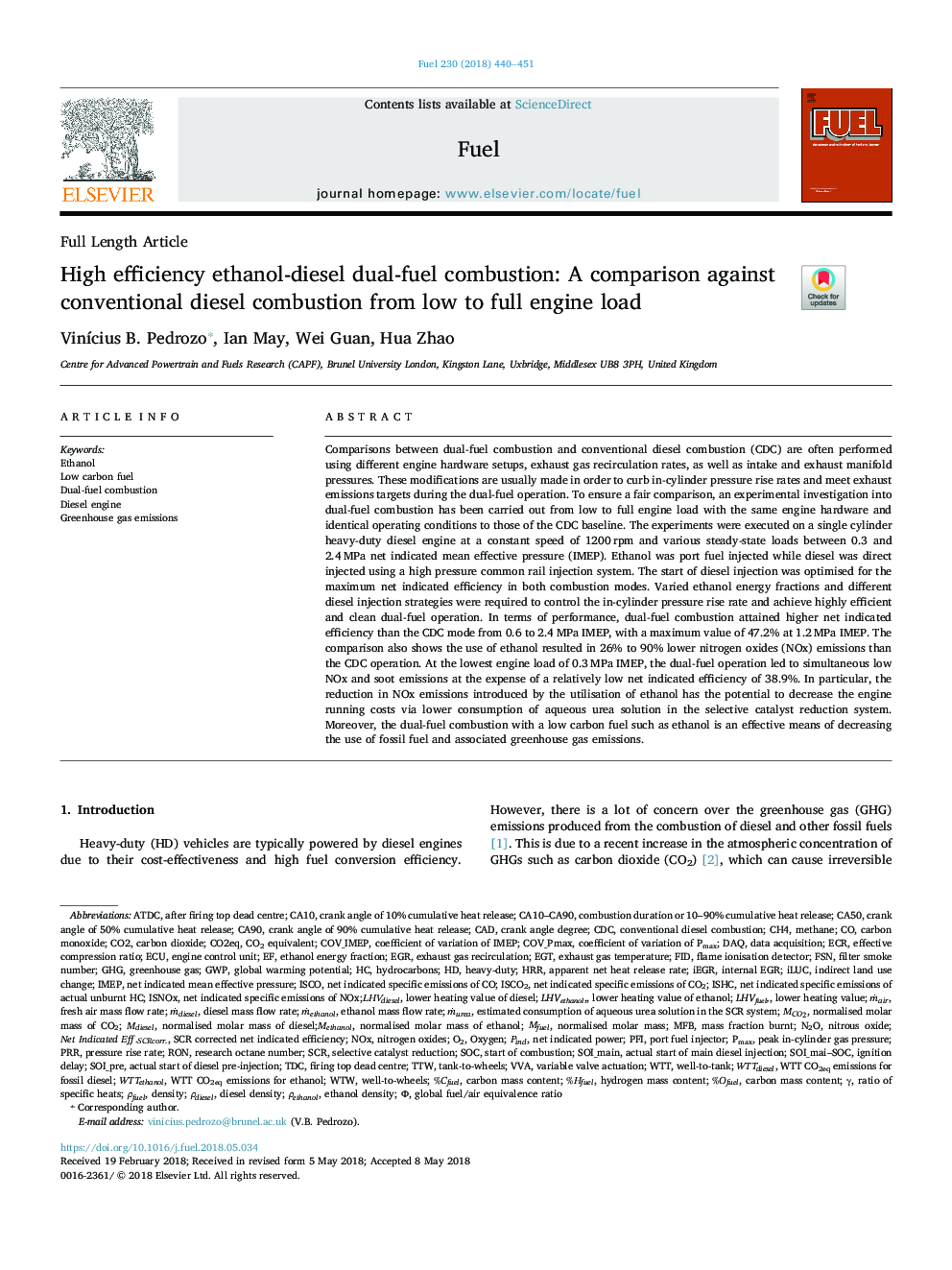| Article ID | Journal | Published Year | Pages | File Type |
|---|---|---|---|---|
| 6630655 | Fuel | 2018 | 12 Pages |
Abstract
Comparisons between dual-fuel combustion and conventional diesel combustion (CDC) are often performed using different engine hardware setups, exhaust gas recirculation rates, as well as intake and exhaust manifold pressures. These modifications are usually made in order to curb in-cylinder pressure rise rates and meet exhaust emissions targets during the dual-fuel operation. To ensure a fair comparison, an experimental investigation into dual-fuel combustion has been carried out from low to full engine load with the same engine hardware and identical operating conditions to those of the CDC baseline. The experiments were executed on a single cylinder heavy-duty diesel engine at a constant speed of 1200â¯rpm and various steady-state loads between 0.3 and 2.4â¯MPa net indicated mean effective pressure (IMEP). Ethanol was port fuel injected while diesel was direct injected using a high pressure common rail injection system. The start of diesel injection was optimised for the maximum net indicated efficiency in both combustion modes. Varied ethanol energy fractions and different diesel injection strategies were required to control the in-cylinder pressure rise rate and achieve highly efficient and clean dual-fuel operation. In terms of performance, dual-fuel combustion attained higher net indicated efficiency than the CDC mode from 0.6 to 2.4â¯MPa IMEP, with a maximum value of 47.2% at 1.2â¯MPa IMEP. The comparison also shows the use of ethanol resulted in 26% to 90% lower nitrogen oxides (NOx) emissions than the CDC operation. At the lowest engine load of 0.3â¯MPa IMEP, the dual-fuel operation led to simultaneous low NOx and soot emissions at the expense of a relatively low net indicated efficiency of 38.9%. In particular, the reduction in NOx emissions introduced by the utilisation of ethanol has the potential to decrease the engine running costs via lower consumption of aqueous urea solution in the selective catalyst reduction system. Moreover, the dual-fuel combustion with a low carbon fuel such as ethanol is an effective means of decreasing the use of fossil fuel and associated greenhouse gas emissions.
Keywords
Selective catalyst reductionPFIECUCA50HRRIMEPCDCECRFSNMFBPRRDAQEGTISCOInternal EGRPmaxWTWVVACO2 equivalentNet Indicated Mean Effective PressureTTWWTTCA10CO2eqport fuel injectorCA90GHGEGRN2OTDCCH4aTDCGWPiLUCNOxflame ionisation detectorEthanolDual-fuel combustionConventional diesel combustionlower heating valueGreenhouse gas emissionsResearch Octane NumberData acquisitionNitrous oxideNitrogen oxidesOxygenWell-to-wheelsIgnition delayIndirect land use changeWell-to-tankFIDcrank angle degreeExhaust gas temperatureCarbon dioxideRONVariable valve actuationSOCStart of combustionFilter Smoke NumberCADMethanecarbon monoxideDiesel enginePressure rise rateHydrocarbonsEngine control unitHeavy-dutyglobal warming potentialDensityCO2mass fraction burntGreenhouse gasexhaust gas recirculationSCR
Related Topics
Physical Sciences and Engineering
Chemical Engineering
Chemical Engineering (General)
Authors
VinÃcius B. Pedrozo, Ian May, Wei Guan, Hua Zhao,
